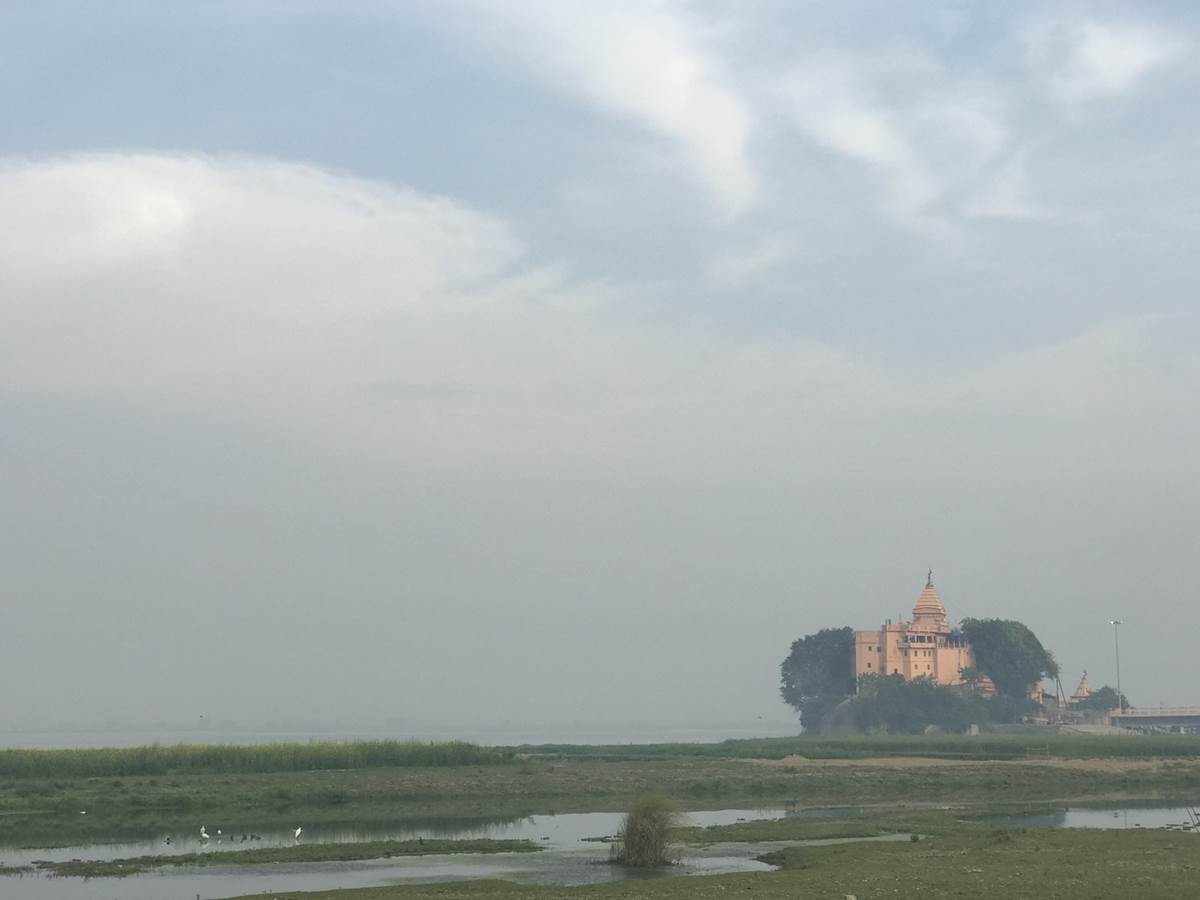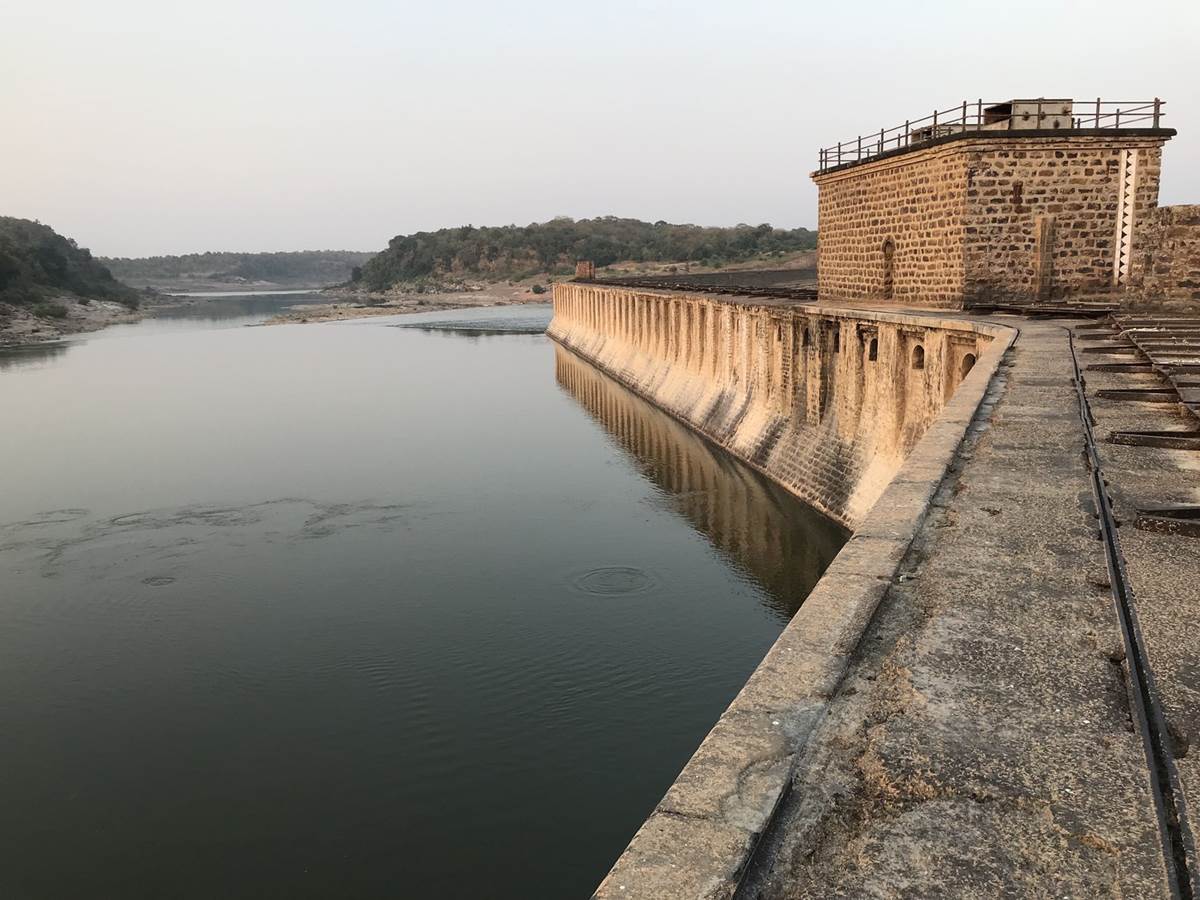
Photo Source: National Geographic. "In Bihar state, Baba Ajgavi Nath temple rises on the edge of the Ganges in Sultanganj, part of a sanctuary for critically endangered river dolphins."
National Geographic recently hosted three webinars that gave fans the opportunity to hear from the team behind the most recent Out of Eden Project article that was published in the August 2020 issue of National Geographic magazine. The narrative of the article was focused on the water crisis in India that is only going to get more complicated as time goes on and that was the focus of the first presentation. The second and third were meant to focus on the natural and human environments that the team encountered, but I quickly discovered that it’s impossible to separate these from the water issues, with the topic still dominating the conversation in both follow up webinars.
“When you think about India, to most of the international community, it evokes certain archetypal landscapes,” Out of Eden founder and writer Paul Salopek shared during the second presentation. “And that’s a water world. It’s got these big muscular rivers… India has perhaps the rainiest corner of the world… In the hundreds of conversations that we have, mostly with the rural Indians… water bubbles up as a major concern and a serious anxiety… Either there’s not enough of it or there’s too much of it or its appearance and disappearance is erratic due to climate change.” Paul shared that India is facing the worst water crisis in the world where 100 million residents live in cities that are expected to dry out this year. 70% of households don’t have access to clean drinking water.
National Geographic Explorer and photographer Arati Kumar-Rao talked about how humans have posed a threat to the Indus River Dolphins where less than 12 are believed to still be in India and less than 2,000 remaining in the world, primarily in Pakistan. Man made dams have cut off their ability to travel through the rivers and have also impacted the water quality, making it dark and murky. Fishermen from all over India travel to the Indus to fish because dams have decreased fish populations in other rivers as well and the Indus dolphins are unintentionally caught in fishnets. “This was done 50 years ago and you’d think we’ve learned our lesson,” Arati shared as she talked about India’s plans to build even more dams. “These dams are devastating because they control water flow.”
Siddharth Agarwal shared his frustrations with the media for not covering floods throughout India. “Rivers as a concept have completely vanished from our minds and have just been channeling in our minds as just a channel of water, which it’s not. It’s an ecosystem.” Like Arati, he shared another threat to native animals that will be impacted by plans for a new dam to be constructed to channel away the Betwa River, which will take water away from the rainforest that houses the Panna Tiger Reserve. “Somehow it’s not worrying the people who are proposing these plans.” He also talked about how India’s bore wells are drying up with India pulling more water out of the ground than any other country where the nation didn’t realize they had been taking too much water from the earth until 2005 when it was discovered that the water left was fossil water. To make matters worse, most of India’s water goes to crops that are then exported.
Writer Prem Panicker shared how this issue is not at all unique to India and that other countries will suffer a similar fate if they don’t make changes. “We are in a state of both institutional and societal denial… Governments across time, they’re very happy to push these issues down the road, leave it to the next government or the next generation.” While India may be the country that pulls the most water out of the earth, the US is number 3 on that list just behind China. “We have been kicking this can down the road for decades and it now occurs to me that we’re running out of road.”

Photo Source: National Geographic. "Bariyapur dam, on the River Ken, has been in place for a century. A much larger dam and reservoir proposed near the site will flood 23 square miles of land, including endangered tiger habitat."
During the third and final webinar, Paul Salopek put the difference between countries and cultures into perspective. “When you talk to anybody, whether you’re walking through Ethiopia, the Palestinian territories, the caucuses, or in this case, the great river planes of northern India, there are commonalities and people talk about the same things all the time… People talk about their lives, their children, the climate changing, people they love or they’re not getting the love they wish they got, they talk about their jobs… It confirms to me as a storyteller just how united we are as a people across cultures and languages and ideologies… In that tiny fraction of individual difference… that gap is where storytelling happens and in walking across northern India, that unique storytelling narrative, that spark of the stories we tell about ourselves and who we are, almost always centered around water.”
Click here to learn more about Out of Eden, including stories, photos, and videos from the journey so far.
Watch all of Out of Eden Walking India Part 2 here:
